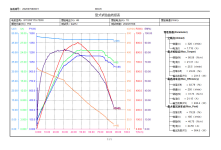romandesign
1 mW
Hi, I just bought my first ebike: Whelspeed Taurus, an inexpensive Chinese fat bike with a 500W rear hub motor, 14.5Ah battery and S830 display. Of course, I found the unlock code and removed the speed limiter. But going through the settings, I discovered that the factory Current Limiter settings are set to 12A. Now I'm puzzled. It seems too low according to the specs. Am I missing anything? Should I increase the limiter to the lowest of the rated controller / battery / motor rating?
With the speed limiter removed, if the wheel is suspended in the air it gets to 49km/h on a freshly charged battery. I only tried it once on the road, and I was too scared to accelerate past about 37km/h but it still wanted to accelerate, so maybe it can get to 49 km/h if I let it. The default was limited to 32 km/h. One thing I noticed on the motor specs page is that it's rated for speeds of "25 - 40 km/h", so maybe that would be the reason, so it doesn't spin too fast? But if the speed is the issue, I can set the speed limiter to 40km/h and enjoy the improved acceleration, right? Also, I don't think occasional speed peaks should matter much.
The bike product page says the motor is "500W with up to 800W output". 800W / 48V equals 16.6A draw, which makes sense. So isn't 16A a proper setting to use then?
I'd appreciate some advice...
Here are my component's photos:




- The best I could do to identify the white-label motor is MXUS GDR-15-FAT - which according to the chart can draw 24.5A on max power at 904W, and it's ~21A at max torque and max efficiency peaks.
- My battery is 48V 14.5Ah/696Wh with maximum discharge current of 25A
- My controller current limit is listed as 18A
With the speed limiter removed, if the wheel is suspended in the air it gets to 49km/h on a freshly charged battery. I only tried it once on the road, and I was too scared to accelerate past about 37km/h but it still wanted to accelerate, so maybe it can get to 49 km/h if I let it. The default was limited to 32 km/h. One thing I noticed on the motor specs page is that it's rated for speeds of "25 - 40 km/h", so maybe that would be the reason, so it doesn't spin too fast? But if the speed is the issue, I can set the speed limiter to 40km/h and enjoy the improved acceleration, right? Also, I don't think occasional speed peaks should matter much.
The bike product page says the motor is "500W with up to 800W output". 800W / 48V equals 16.6A draw, which makes sense. So isn't 16A a proper setting to use then?
I'd appreciate some advice...
Here are my component's photos:




Last edited:

